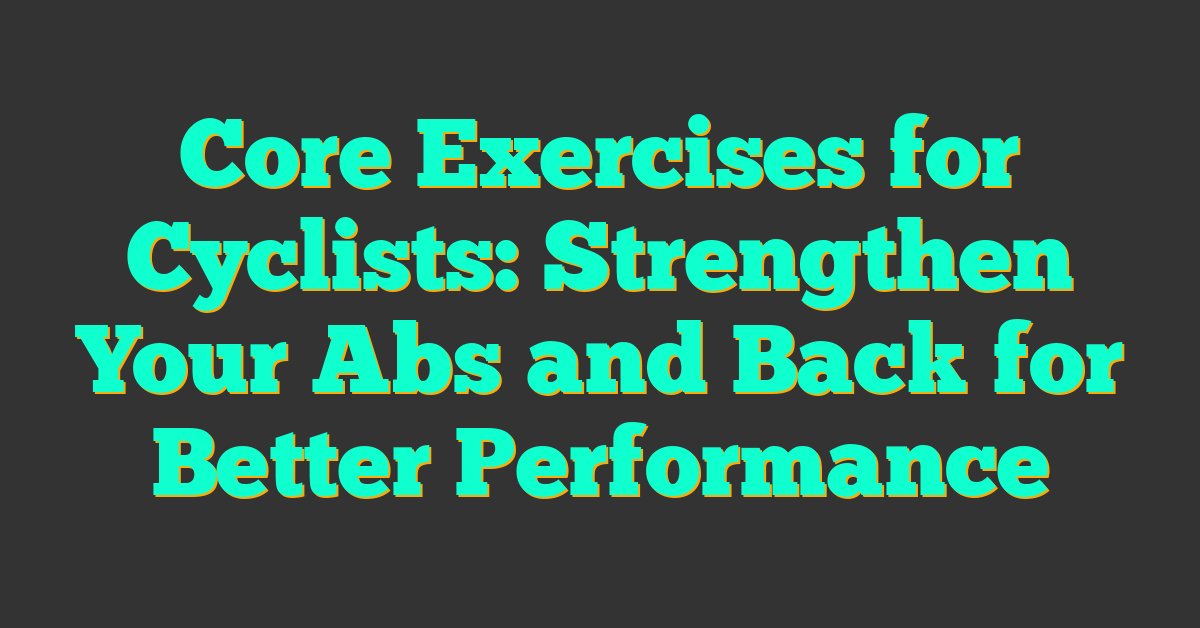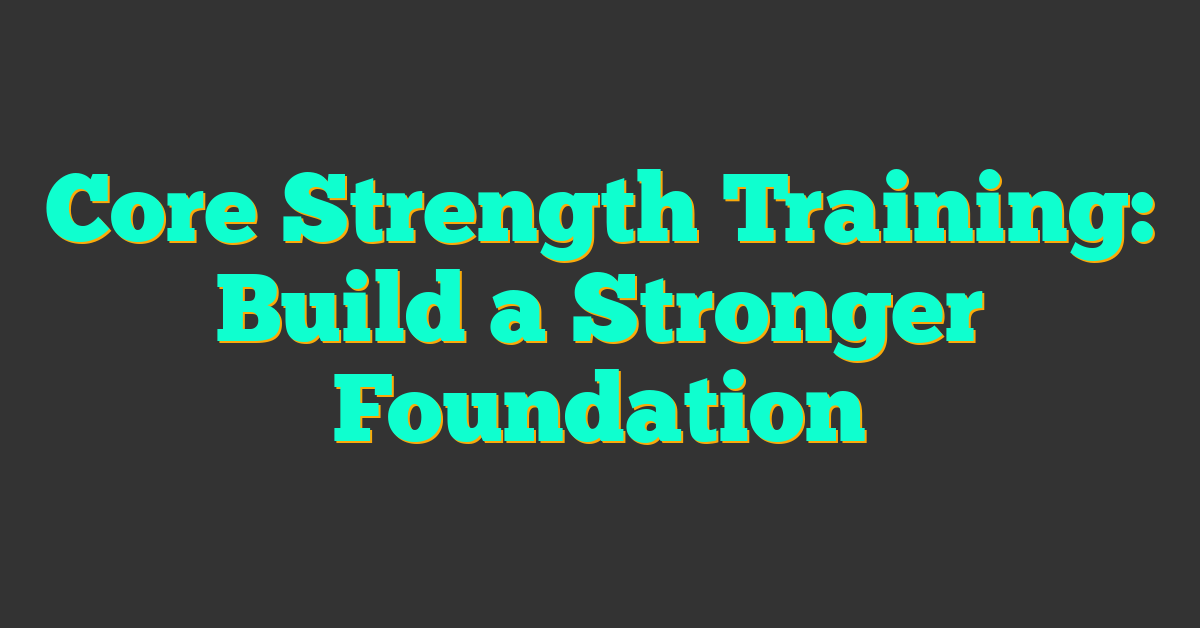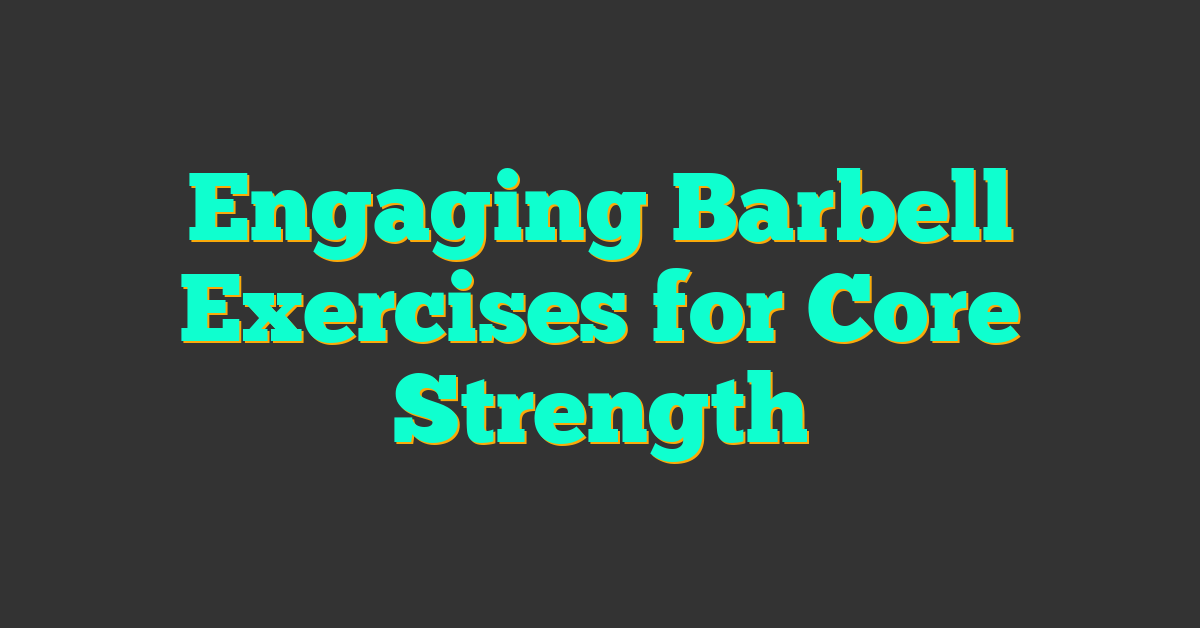If you’re a cyclist, runner, or triathlete, you know that core strength is essential for improving your performance and reducing your risk of injury. Your core muscles help stabilize your spine, pelvis, and hips, providing a solid foundation for your movements. By incorporating core exercises into your training routine, you can improve your balance, posture, and overall athleticism.

Understanding Core Strength for Endurance Athletes
Core strength is the foundation of your athletic performance, and it’s essential for endurance athletes like cyclists, runners, and triathletes. Your core muscles provide stability and support for your spine, pelvis, and hips, which are the foundation of your movement. By strengthening your core, you can improve your balance, posture, and overall athleticism.
Core Exercises for Cyclists
Cyclists can benefit from a variety of core exercises that help improve their posture, balance, and power. Exercises like planks, bird dogs, and bridges can help cyclists develop a strong and stable core, which is essential for maintaining proper form and generating power on the bike. Additionally, exercises like leg raises and Russian twists can help improve your hip flexor strength, which is crucial for generating power during sprints and climbs.
Key Takeaways
- Core strength is essential for endurance athletes like cyclists, runners, and triathletes.
- Incorporating core exercises into your training routine can improve your balance, posture, and overall athleticism.
- Cyclists can benefit from a variety of core exercises that help improve their posture, balance, and power.
Understanding Core Strength for Endurance Athletes
https://www.youtube.com/watch?v=zhLezCF8XGA&embed=true

As an endurance athlete, you know that strength training is an essential part of your training regimen, but do you understand the importance of core strength? Your core muscles are the foundation of your body, and they play a critical role in your performance as a cyclist, runner, or triathlete. In this section, we’ll explore the importance of core muscles in triathlon and the anatomy of the core muscles.
The Importance of Core Muscles in Triathlon
Your core muscles are responsible for stabilizing your body and maintaining good posture. During a triathlon, you rely on your core muscles to maintain your form and transfer power from your legs to your upper body. Without a strong core, you may experience inefficient movement patterns, which can lead to decreased performance and increased risk of injury.
Anatomy of the Core: Muscles and Functions
Your core muscles are located in your torso and include the rectus abdominis, obliques, transverse abdominis, erector spinae, and multifidus muscles. Each of these muscles has a specific function, and together they work to stabilize your spine and pelvis.
The rectus abdominis muscles, located in the front of your abdomen, are responsible for flexing your spine and stabilizing your pelvis during movement. The obliques, located on the sides of your abdomen, help to rotate your torso and maintain good posture. The transverse abdominis, located deep in your abdomen, acts as a corset to stabilize your spine and pelvis. The erector spinae muscles, located in your lower back, help to extend your spine and maintain good posture. Finally, the multifidus muscles, located along your spine, help to stabilize your vertebrae during movement.
To improve your core strength, it’s important to include exercises that target each of these muscle groups. Incorporating exercises such as planks, Russian twists, and bird dogs into your training routine can help to improve your core strength and stability.
In conclusion, understanding the importance of core strength is essential for endurance athletes. Your core muscles play a critical role in your performance as a cyclist, runner, or triathlete, and incorporating core strengthening exercises into your training regimen can help to improve your form, efficiency, and reduce the risk of injury.
Core Exercises for Cyclists
https://www.youtube.com/watch?v=c7SONJGRigE&embed=true
As a cyclist, you know that your core is essential for power and stability on the bike. By strengthening your core, you can improve your posture, pedal more efficiently, and reduce the risk of injury. Here are some core exercises that will help you become a better cyclist.
Exercises to Enhance Power and Posture on the Bike
Plank: The plank is one of the best exercises for your core. It strengthens your abs, back, and hip muscles, which are all essential for cycling. To do a plank, get into a push-up position with your elbows on the ground. Hold this position for 30-60 seconds, keeping your body straight and your core tight.
Side Plank: The side plank is another great exercise for your core. It targets your oblique muscles, which are important for stability on the bike. To do a side plank, lie on your side with your elbow on the ground. Lift your hips off the ground, keeping your body in a straight line. Hold this position for 30-60 seconds, then switch sides.
Bicycle Crunch: The bicycle crunch is a classic core exercise that targets your abs and hip flexors. To do a bicycle crunch, lie on your back with your hands behind your head. Lift your legs off the ground and bend your knees. Bring your right elbow to your left knee, then switch sides. Do 10-15 reps on each side.
Stabilizing the Pelvis and Lower Back for Cycling
Bird Dog: The bird dog is an excellent exercise for stabilizing your pelvis and lower back. To do a bird dog, get on your hands and knees. Extend your right arm and left leg out straight, then bring them back in. Repeat on the other side. Do 10-15 reps on each side.
Dead Bug: The dead bug is another great exercise for your core. It targets your abs and hip flexors, while also stabilizing your lower back. To do a dead bug, lie on your back with your arms and legs in the air. Lower your right arm and left leg towards the ground, then bring them back up. Repeat on the other side. Do 10-15 reps on each side.
By incorporating these core exercises into your training routine, you can improve your power, stability, and posture on the bike. Remember to start with a few reps and gradually increase the intensity and duration of each exercise as you get stronger. Happy cycling!
Core Workouts for Runners
https://www.youtube.com/watch?v=3RN7-oOTIEw&embed=true
As a runner, you know that having a strong core is essential for improving your running form and efficiency. Incorporating core workouts into your training routine can help you achieve your running goals and reduce your risk of injury.
Improving Running Form and Efficiency
One of the main benefits of core training for runners is improving running form and efficiency. A strong core helps you maintain proper posture and alignment while running, which can reduce the risk of injuries and improve your running economy.
To improve your running form and efficiency, try incorporating exercises such as plank variations, mountain climbers, and flutter kicks into your core workout routine. These exercises not only target your core muscles but also engage your hip and glute muscles, which are essential for running.
Targeting Hip and Glute Strength for Runners
In addition to improving running form and efficiency, targeting hip and glute strength is crucial for runners. Strong hip and glute muscles help to stabilize your pelvis and prevent excessive movement while running, which can reduce the risk of injuries.
To target your hip and glute muscles, try incorporating exercises such as hip bridges, clamshells, and lateral band walks into your core workout routine. These exercises are effective in strengthening your hip and glute muscles, which can improve your running performance and reduce the risk of injuries.
Overall, incorporating core workouts into your training routine can help you achieve your running goals and reduce your risk of injury. By targeting your core, hip, and glute muscles, you can improve your running form and efficiency, which can lead to better performance and a more enjoyable running experience.
Triathlete-Specific Core Training
https://www.youtube.com/watch?v=p1yssOjFKtg&embed=true
As a triathlete, you need to balance your core workouts across swim, bike, and run. Your core muscles are vital to maintaining proper form and technique during each discipline. Here are some tips for triathlete-specific core training:
Balancing Core Workouts Across Swim, Bike, Run
« Core Exercises for Cyclists: Strengthen Your Abs and Back for Better Performance
Core Strength Training: Build a Stronger Foundation »
It’s important to tailor your core workouts to each discipline. For example, you need to focus on your upper body and core muscles when swimming, while cycling requires more lower body and core strength. Running, on the other hand, requires a balance of both upper and lower body strength.
To balance your core workouts across swim, bike, and run, consider incorporating functional strength exercises that target multiple muscle groups. Plank variations are a great example of this. You can modify planks to target different muscle groups by adding arm or leg movements, or by using an unstable surface like a stability ball.
Rotation and Lateral Movement for Triathletes
Rotation and lateral movement are essential for triathletes. These movements help you maintain balance and stability during each discipline. Exercises like Russian twists and side planks with leg lifts can help you build rotational and lateral strength.
It’s important to focus on endurance as well as strength when training your core. Endurance exercises like the bicycle crunch and the flutter kick can help you build the endurance you need to maintain proper form and technique throughout each discipline.
Remember, a strong core is essential for triathletes. By balancing your core workouts and incorporating exercises that target multiple muscle groups, you can improve your form, technique, and endurance in each discipline.
Equipment and Exercises for Home and Gym
https://www.youtube.com/watch?v=lxVLxxgUseA&embed=true
If you’re looking to develop your core muscles as a cyclist, runner, or triathlete, there are plenty of exercises you can do at home or at the gym. Here are some ideas for both:
Utilizing Weights and Kettlebells for Core Development
If you have access to a gym or some weights at home, you can use them to add resistance to your core exercises. For example, you can do weighted sit-ups or Russian twists with a dumbbell or a medicine ball. You can also use a kettlebell to do exercises like kettlebell swings or Turkish get-ups.
When using weights or kettlebells, it’s important to start with a weight that is challenging but manageable. You don’t want to use a weight that is too heavy and risk injuring yourself. As you get stronger, you can gradually increase the weight.
Bodyweight Exercises for Core Endurance
If you don’t have any equipment, don’t worry! There are plenty of bodyweight exercises that can help you develop core endurance. Here are a few examples:
- Planks: This exercise is great for strengthening your core muscles, including your abs, back, and shoulders. To do a plank, start in a push-up position and hold your body in a straight line for as long as you can.
- Push-ups: Push-ups are a classic exercise that work your chest, shoulders, triceps, and core muscles. To make them more challenging, you can do them on an unstable surface like a bosu ball.
- V-ups: V-ups are a great exercise for your abs. Lie on your back with your arms and legs straight, then lift your upper body and legs off the ground and reach your hands towards your feet.
- Bird dogs: This exercise works your lower back and glutes. Start on your hands and knees, then lift your right arm and left leg off the ground and hold for a few seconds before switching sides.
These are just a few examples of the many exercises you can do to develop your core muscles. Whether you have access to a gym or not, there are plenty of options for you to choose from.
Frequently Asked Questions

What are the best core exercises for enhancing cycling performance?
Cycling is an endurance sport that requires a strong core to maintain proper posture and balance. Some of the best core exercises for enhancing cycling performance include planks, side planks, Russian twists, and bicycle crunches. These exercises help to strengthen the muscles in your core, improve your stability, and increase your power output.
How can core strength benefit my running form and endurance?
Core strength is essential for runners as it helps to maintain good posture and balance, which can improve running form and endurance. A strong core also helps to transfer power from your upper body to your lower body, which can increase your speed and efficiency. Some of the best core exercises for runners include bridges, bird dogs, and mountain climbers.
Can you recommend a strength training routine for triathletes to do at home?
Yes, a great strength training routine for triathletes to do at home includes exercises that target the major muscle groups used in triathlon, such as the legs, core, and upper body. Some of the best exercises include squats, lunges, push-ups, pull-ups, and planks. It’s important to start with lighter weights and gradually increase the weight and intensity as you get stronger.
How frequently should a triathlete engage in strength training for optimal results?
For optimal results, a triathlete should engage in strength training at least two to three times per week. It’s important to give your muscles time to recover between workouts, so it’s best to alternate muscle groups and take at least one day off per week. Be sure to listen to your body and adjust your workout schedule as needed.
What type of cross-training is most effective for triathletes looking to improve their core?
Cross-training is a great way to improve your core strength and prevent injury. Some of the best cross-training activities for triathletes include yoga, Pilates, and swimming. These activities help to improve your flexibility, balance, and stability, which can translate to better performance in all three disciplines of triathlon.
What strength exercises are essential for a Half Ironman training program?
A Half Ironman is a challenging race that requires a high level of fitness and endurance. Some essential strength exercises for a Half Ironman training program include lunges, squats, deadlifts, push-ups, pull-ups, and planks. It’s important to work on both your upper and lower body strength, as well as your core, to ensure that you are well-rounded and prepared for the race.





![Lamicall Bike Frame Bag Waterproof - [1s Release] [2 in](https://m.media-amazon.com/images/I/41WyOmmNsYL._SL500_.jpg)




